24.03.2014Cambodian Cooking Class
What better way is there to experience a foreign cuisine and learn about the subtle differences between the Asian cooking styles than by learning how to prepare the characteristic dishes in the particular countries?
We started this endeavor by signing up for a cooking class in Phnom Penh and hoped to learn about the specialties and secrets of Cambodia’s cuisine. Who knows, perhaps in the end we might even be able to prepare some of the delicious Khmer foods ourselves?
But lets have a brief look back in history first: A thousand years ago the Khmer Kingdom, which centered in Angkor, ruled an empire that included most of South-East Asia. Consequently many of the Thai, Vietnamese, Lao and Cambodian dishes have their roots in Khmer dishes. These Khmer recipes date back to the days before the introduction of the chili, which is why they are generally less spicy than most other Asian food. The nowadays widely used chili was first introduced to Asia by the Portuguese in the 16th century.
In the morning we met up with the other cooking class participants and our instructor in the restaurant offering the class. Our teacher’s name was “Lucky II” and as you can easily guess his older brother’s name was “Lucky I” 🙂 He was just as funny as one might expect from his name and made sure that we all had a blithe time.
Our first lesson before we even started cooking: At least as important as the cooking are the ingredients and therefore a good chef will visit the local market himself to buy the best and freshest ingredients.
So we headed off to the local market to learn about vegetables, fruits, herbs, spices and other typical ingredients. That morning it had rained and the market floor was muddy and slippery and we had to be careful with every step we made to not slip or fall into a basket full of fish or worse things…
First we passed the booths with the already prepared foods. This is the place where the locals come to eat:
As you know from our previous posts, we love markets. They are like real-life museums and no matter how many markets one has already visited, we find each market is somehow special and has its own interesting sides to be discovered. We wondered along the different booths and bough the ingredients for our dishes and carefully listened to the explanations of Lucky II.
In the following we will only point out the less obvious things so you can browse right through our market impressions:
We learned that by no means are these markets only for pedestrians. Even in the most narrow alleys motorbikes manage to squeeze through. I guess this is the drive-in service the men use when they are sent to the market to quickly pick up something.
We passed the egg booths were all kind of eggs are sold. We spotted chicken, duck, quail and even ostrich eggs.
The black eggs are known as preserved or hundred year eggs. In times of plenty, the eggs are preserved by wrapping them in a mixture of clay, ash, salt, lime, rice and straw for several weeks to several months. During the process the alkaline mixture of the egg’s coating gradually raises the pH of the egg and a chemical process breaks down some of the proteins and fats, adding and changing the taste and preserving the egg. The egg yolk becomes a dark green, cream-like substance with a strong odor of sulfur and ammonia, while the white becomes a dark brown, transparent jelly with little flavor or taste.
Next were vegetable and herb booths:
The “meat & fish section”:
The fruit section:
Here a stack of the famous durian or “smelly” fruits. While some people regard the durian as having a revolting smell being described as rotten onions, turpentine and raw sewage other people regard it as having a sweat and pleasant fragrance. Because of the persistence of its odor many hotels and public transportation have banned the fruit. People also refer to the durian as the “king of fruits” due to its large size and thorn-covered husk. The flesh is edible and often eaten with sweet sticky rice or used to flavor other dishes. Some also believe the durian to have aphrodisiac qualities…
Lotus flowers which are about to blossom:
On our way out we spotted a man selling charcoal to the food booths from the back of his truck:
After our little outing to the market we tuk-tuked to the cooking school and finally the cooking part began! The first dish was a sweet and sour sauce. For some dishes everybody got his own ingredients and prepared the dish on his or her own. For other dishes we all pitched in and shared the different steps:
After just a few steps of peeling, chopping and mixing. Voila: our sweat and sour dipping sauce.
Next we prepared Chaio Yor (fried spring rolls):
After wrapping the purely vegetarian-inside in rice paper they took familiar shape:
Final step before they are ready to be eaten: Frying in vegetable oil.
Time for a group picture while we wait for the spring rolls to turn golden brown:
Ready to be enjoyed 🙂
And best served with the sweat and sour dipping sauce:
After enjoying the spring-rolls we started preparing the next dish: Kroeung Amok Fish. While Kroeung is a herbal paste and key to the excotic flavors and aromas, Amok refers to the process of steam cooking the fish in banana leaves.
The ingredients for the herbal paste, which is used to marinate the fish are chillies, shallots, garlic and galangal. We had never even heard of galangal before, but it reminded us of ginger. However it is less bitter and according to Lucky II it is more delicate and extremely healthy. In the Cambodian cuisine it is a very common ingredient.
These four ingredients were added in the mortar together with the zest of a lime and some lemon grass.
Then the manual work started and we pounded and pestled the ingredients until they yielded a smooth and creamy paste.
We added a pinch of salt and mixed the Kroeung with the fish, coconut milk, fish sauce and Nhor leaves. Then we filled this marinated fish in banana leaves which we had previously folded into little cups:
And placed them into the steam cooker:
After around 25 minutes we removed the banana leaf cups from the steamer:
And toppled the content onto our plates. We added a scoop of rice and again enjoyed our very own Kroung Amok fish. This was in fact one of our favorite dishes as the fish was extremely delicate and melted away on our tongues. I think we were all surprised how tasty this dish had turned out 🙂
Cooking with Lucky II was a lot of fun. By the way, coming from a very poor family of a nearby village he had started his cooking training in the “Friends” restaurant we had recently visited. Nice to see it was not a scam and it apparently has helped Lucky II to become a chef in another restaurant and a cooking-class teacher.
Our last main course was Nyom Trayong Jek Neung Moan (banana blossom salad with chicken). In fact we have never before seen a banana blossom in Europe, so re-cooking this dish will probably not be possible without any variations. An entire banana blossom looks like this:
We started with cutting and preparing some of the other ingredients first:
The cutting crew:
Then we cut and washed the thin slices of the banana blossom in lemon water to prevent them from turning black:
First! Andy turned out to be a quick cutter:
Next we dressed our salad and arranged it nicely on the plates.
Everybody according to his or her preference. Bon Appetit!
We realized that the fun was almost over when we started preparing dessert: Sticky Rice & Mango. After putting the rice to cook the actual work started. Peeling and thinly slicing the mango:
Now don’t interrupt! This takes full concentration 🙂
Next we prepared the sweet coconut palm sugar caramel sauce:
And then each of us got to arrange and decorate his dessert. Andy’s yin and yang inspired sun:
And Tini’s Mango heart sprinkled with black sesame. The brown stripes are coconut rasps soaked in the caramel sauce.
We completely agree with the statement in our recipe book: “A simple but delicious dish”!
We hadn’t expected to have this much fun and by the end of the day we ended up completely stuffed with delicious foods. None of us was able to eat another single bite. Needles to say we skipped dinner that evening. A little later we at least felt fit enough to have some cocktails on the hotel patio which helped us continue digesting…
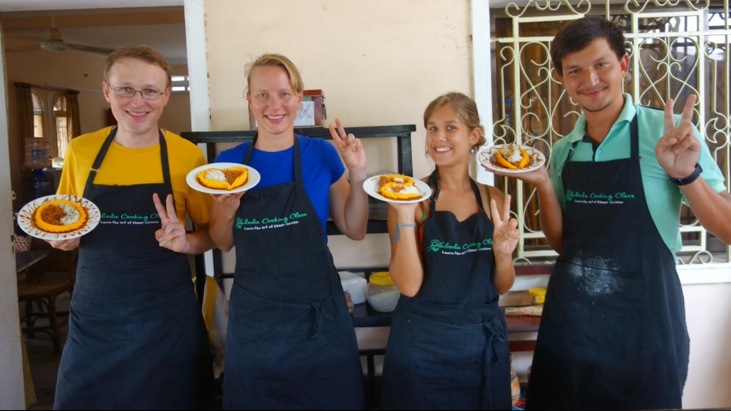
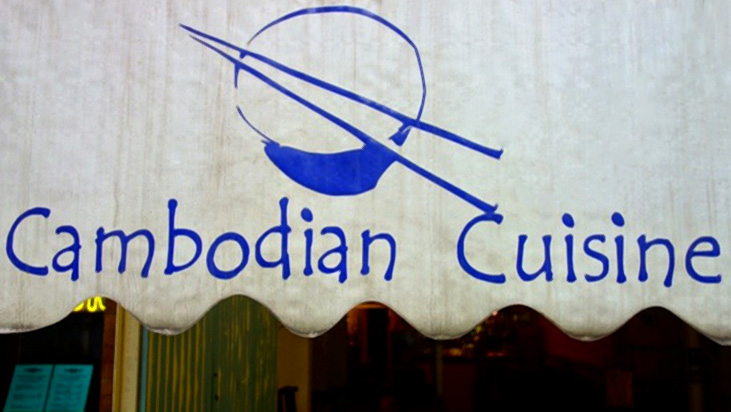
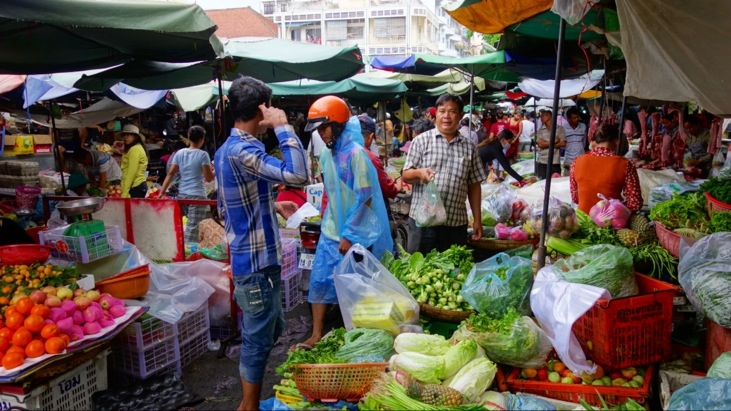
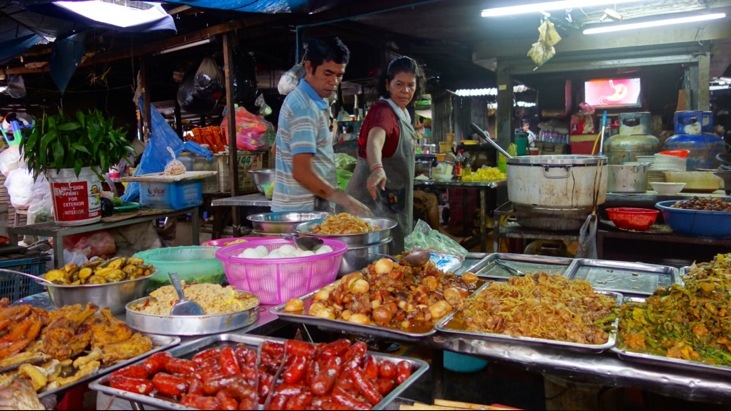

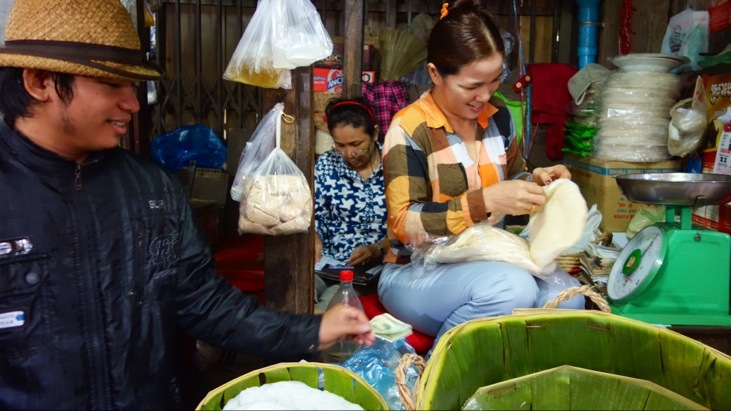
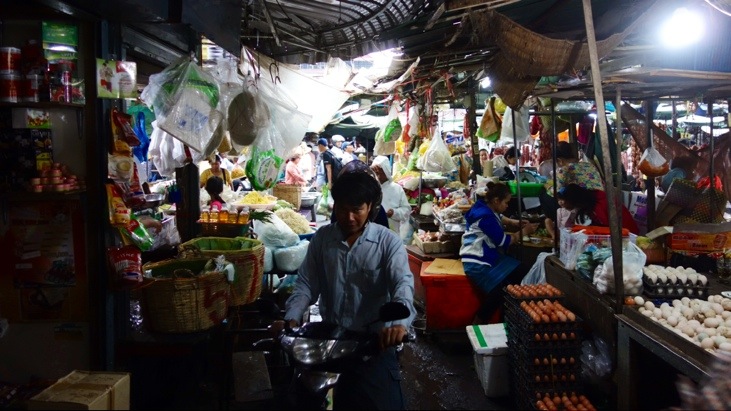
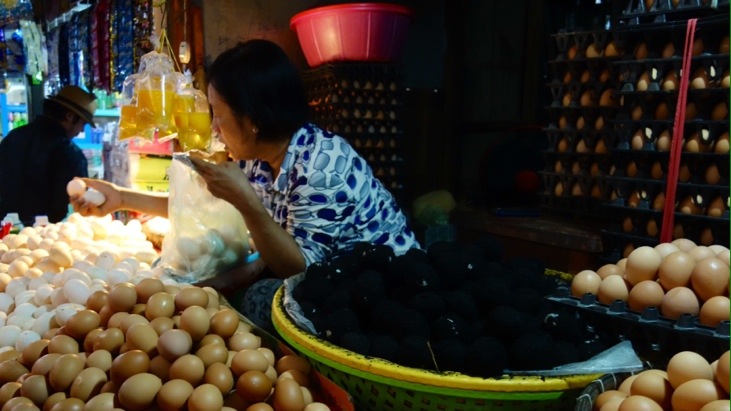
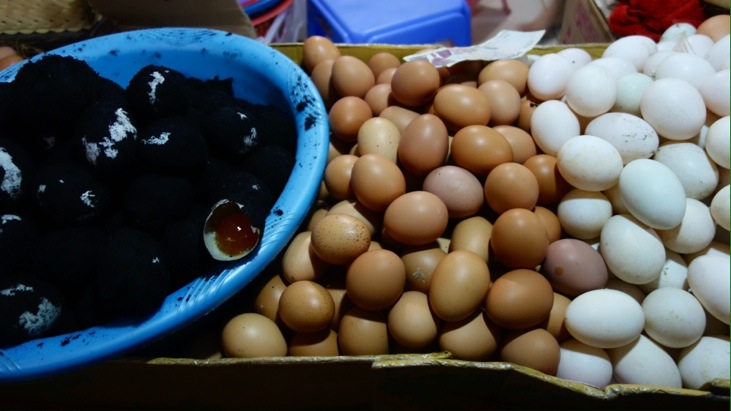
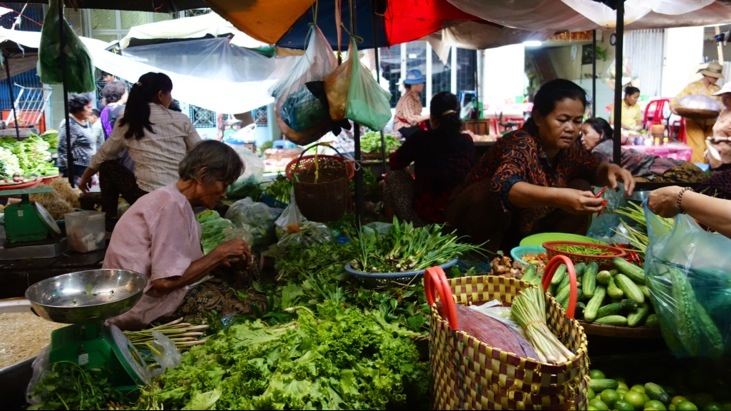

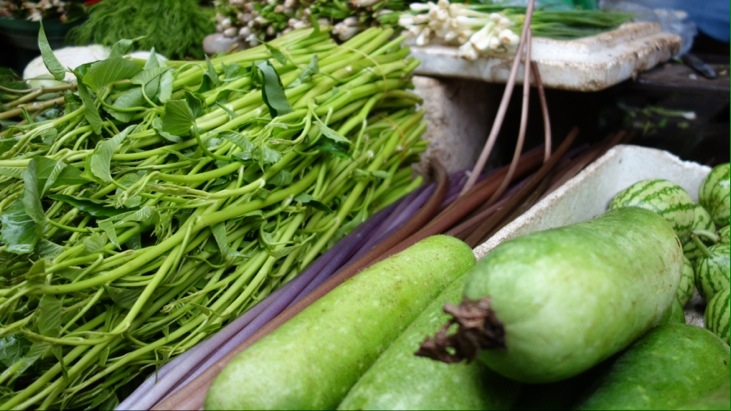

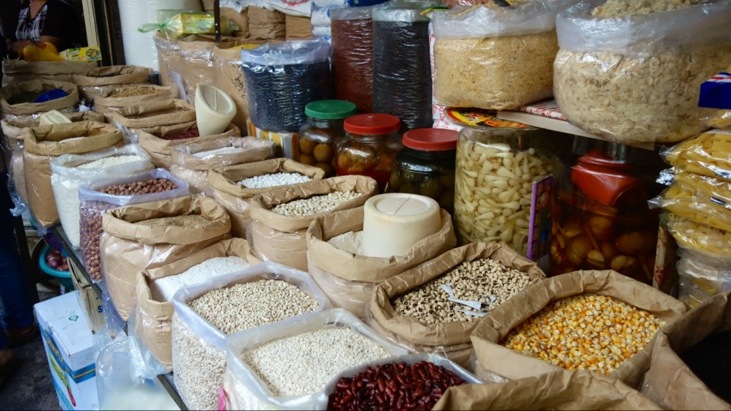
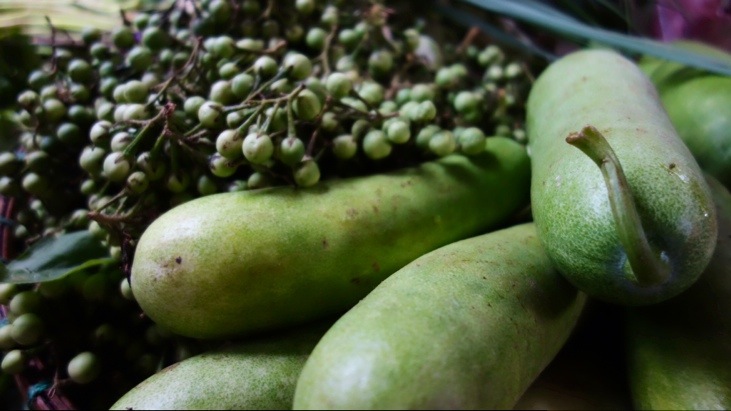
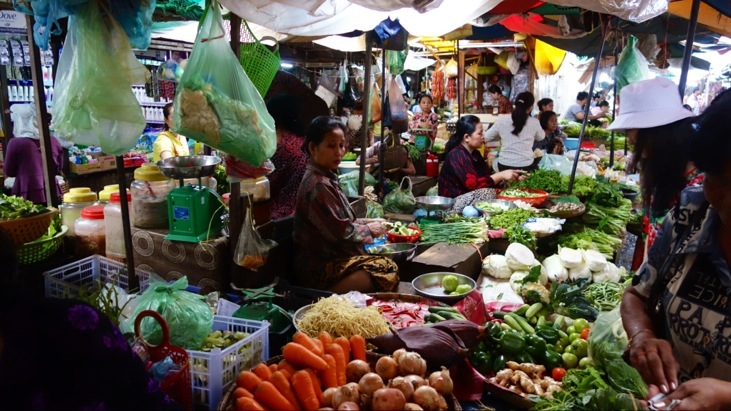


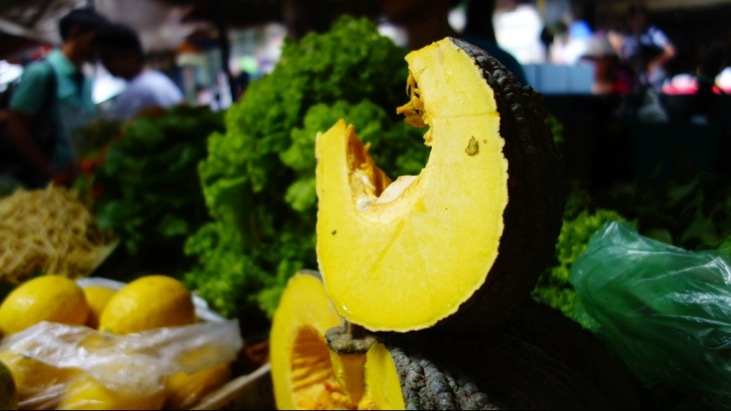
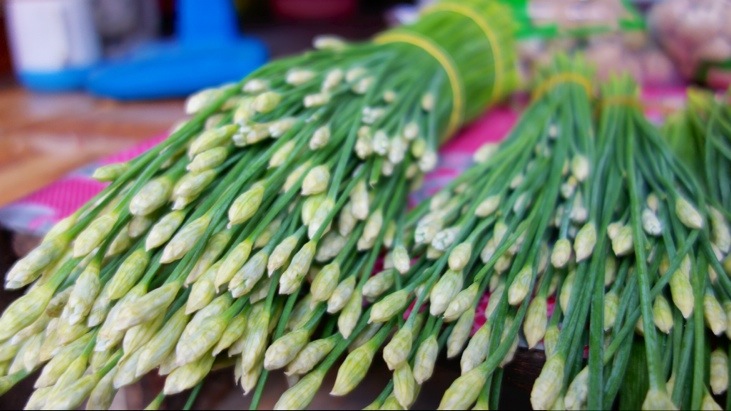
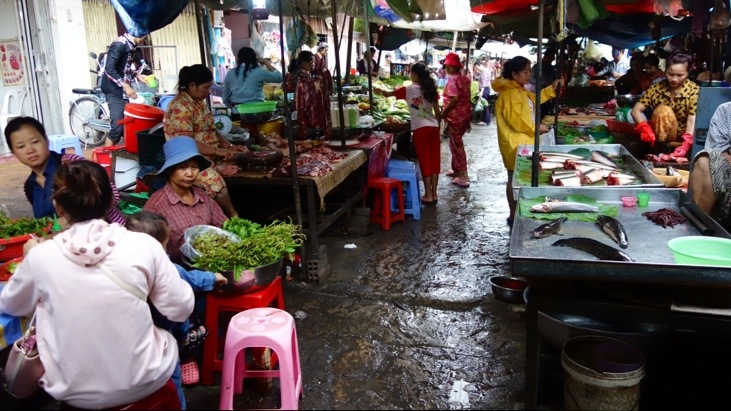
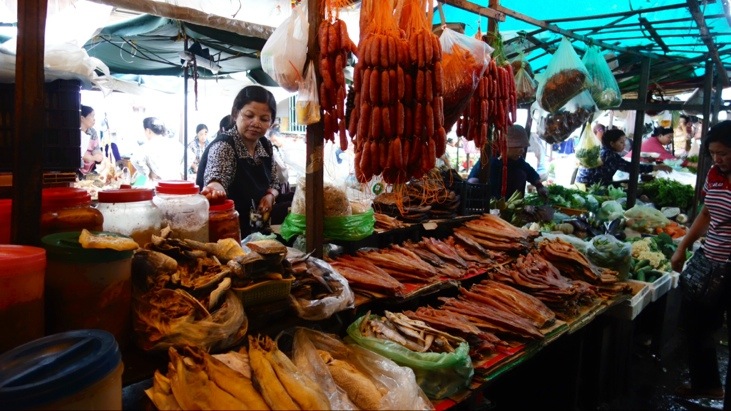
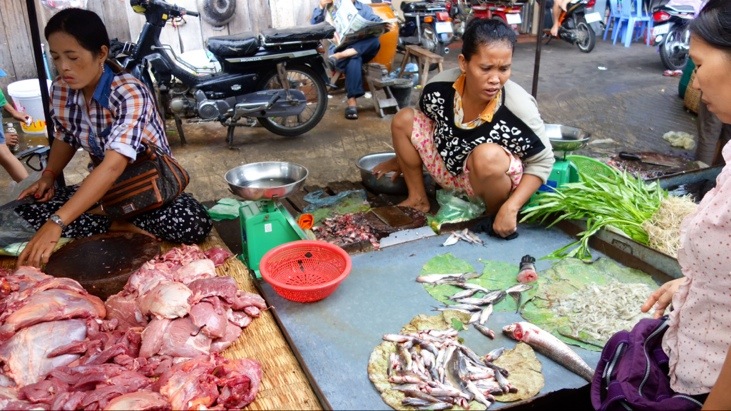
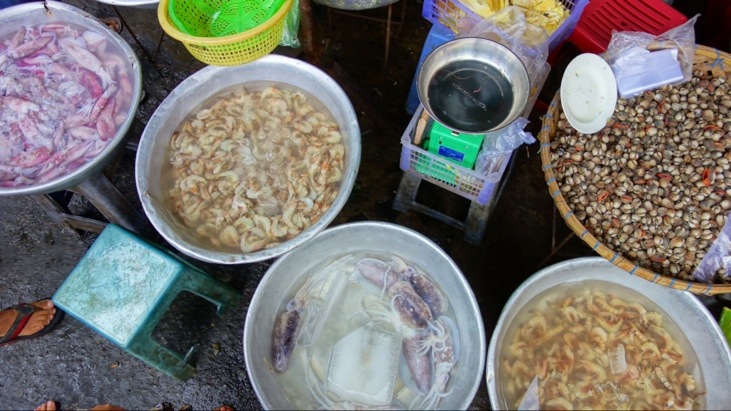
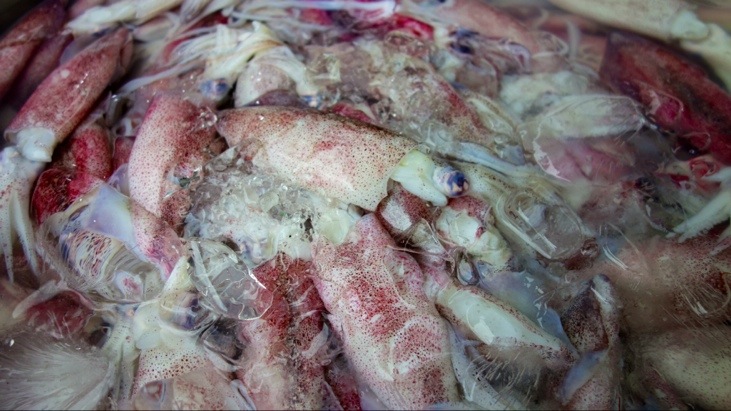
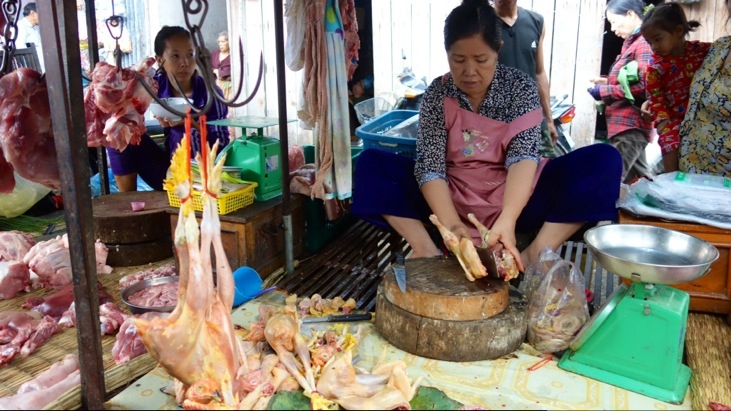

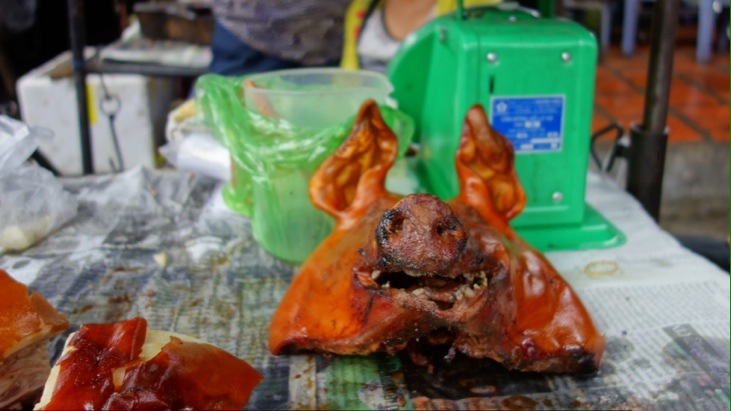
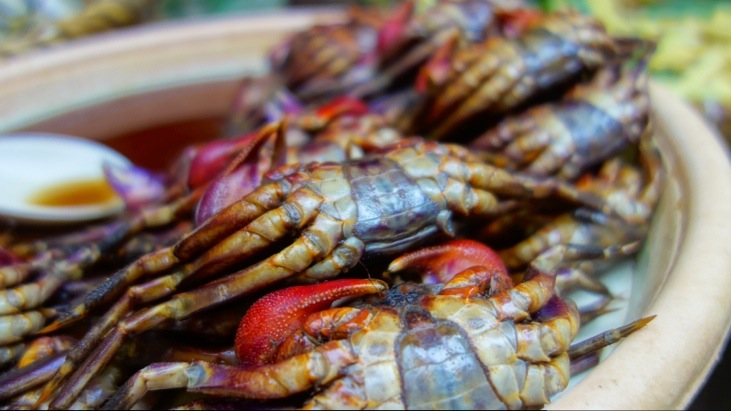
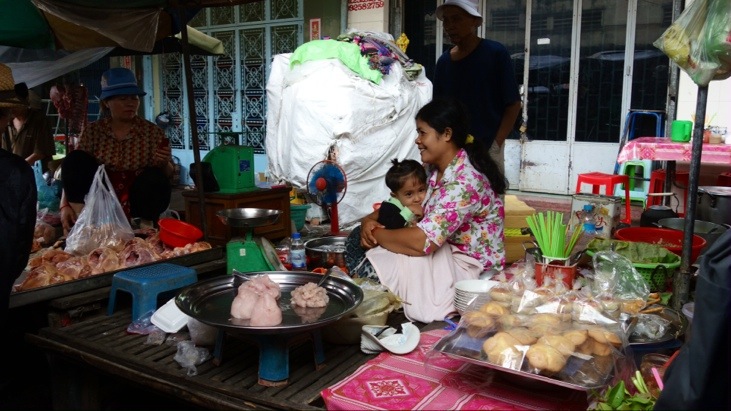
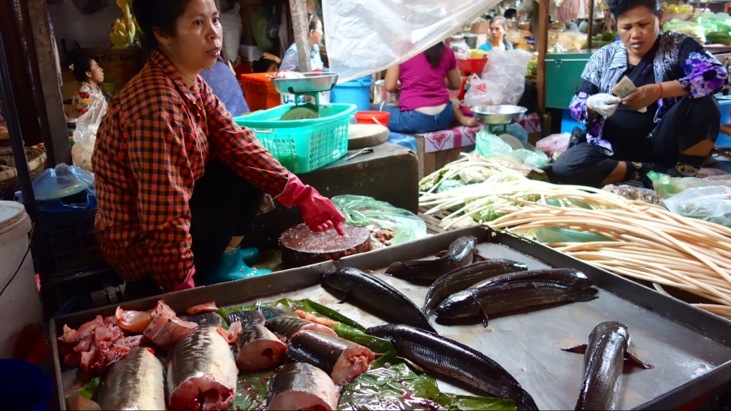

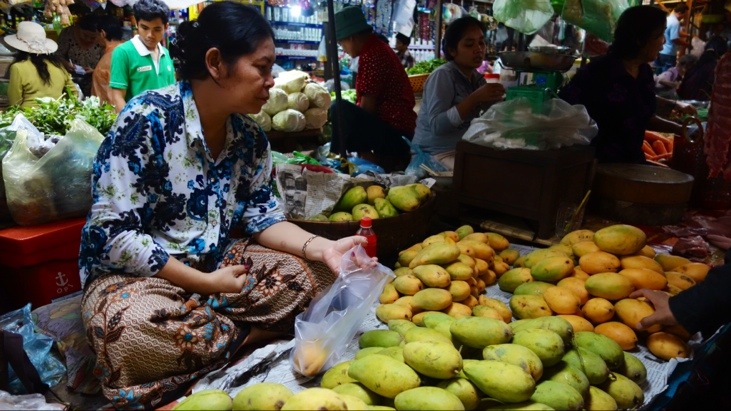
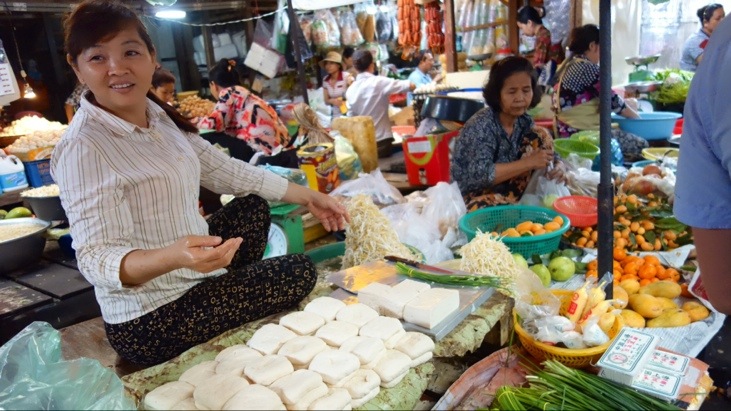
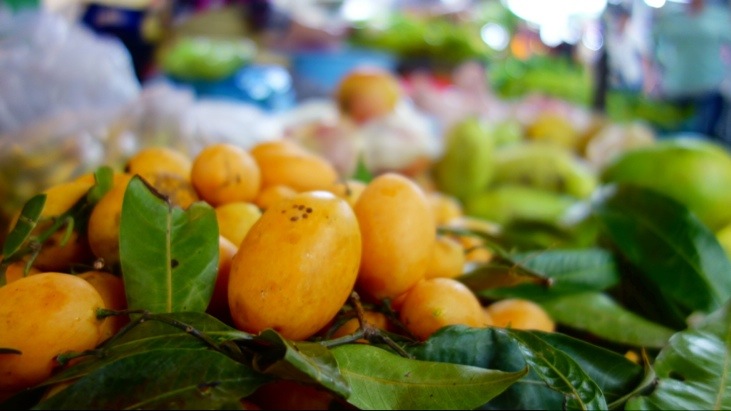

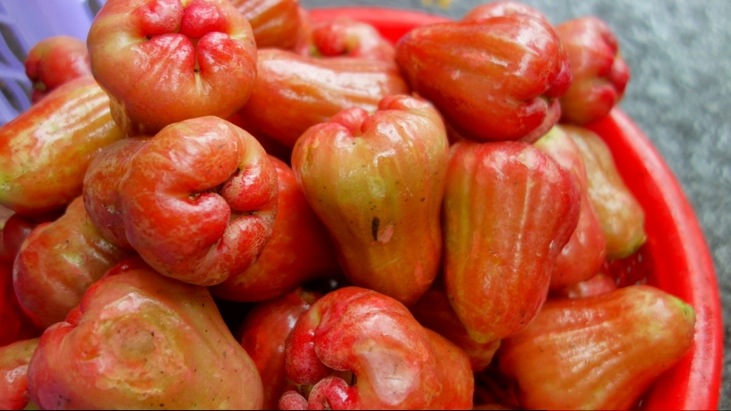
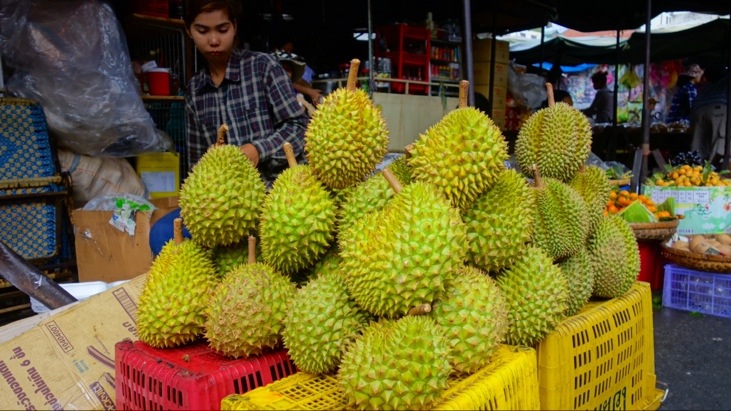
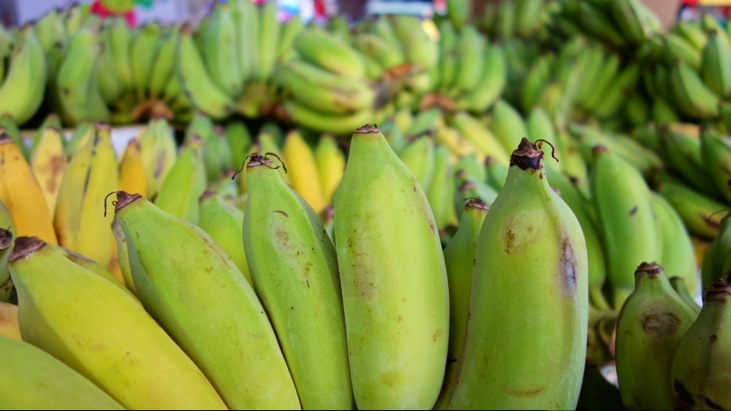
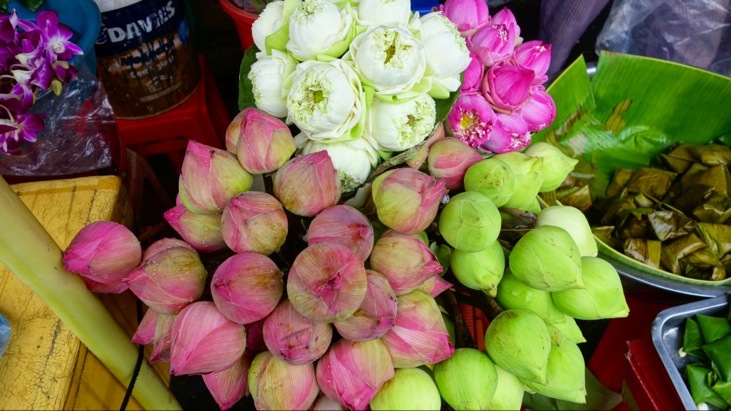

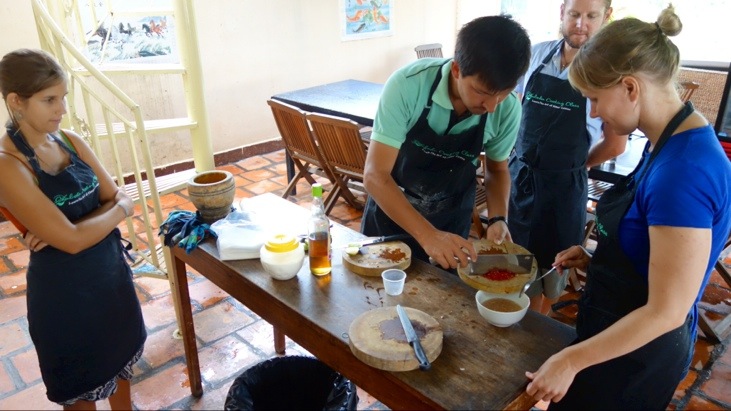
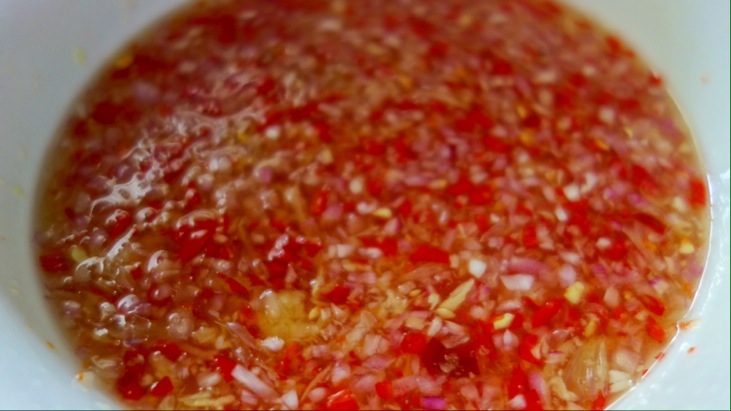
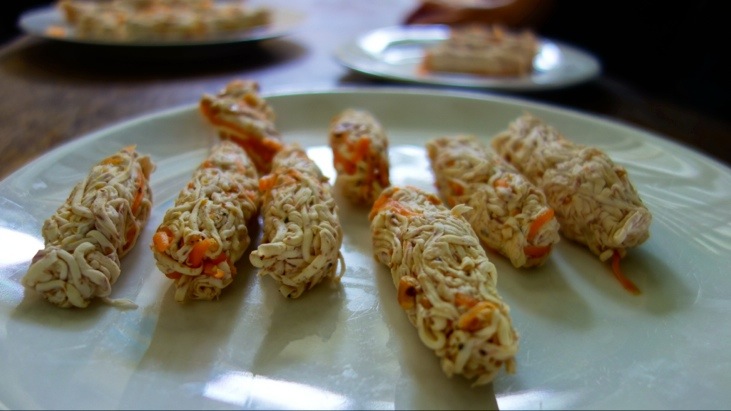
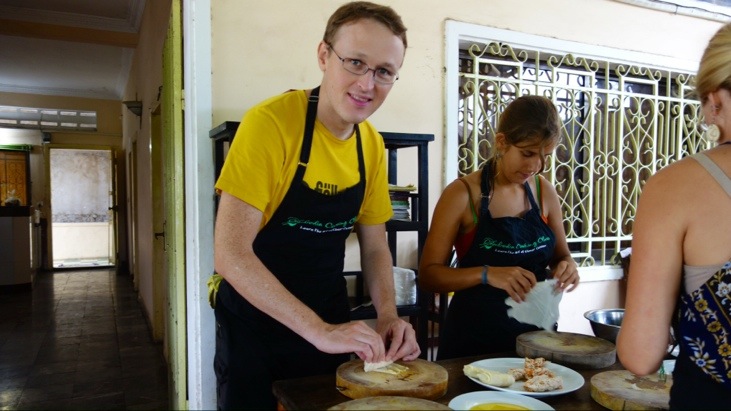
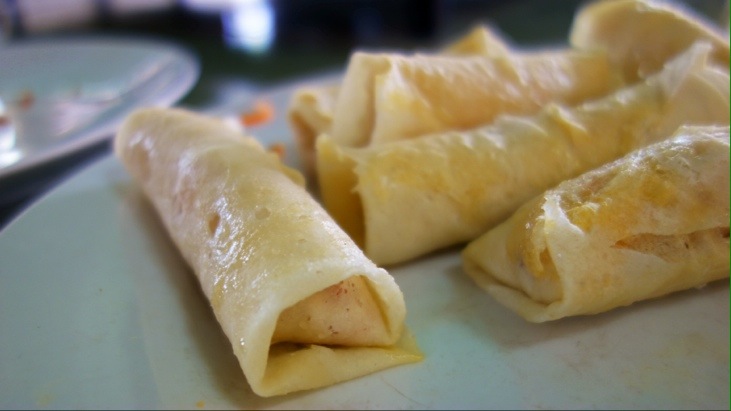
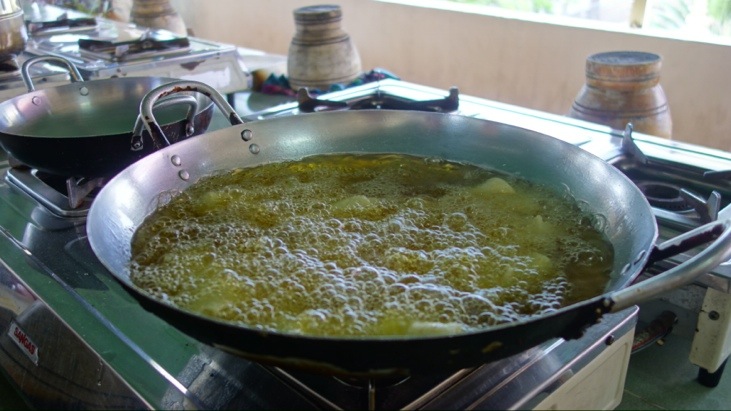
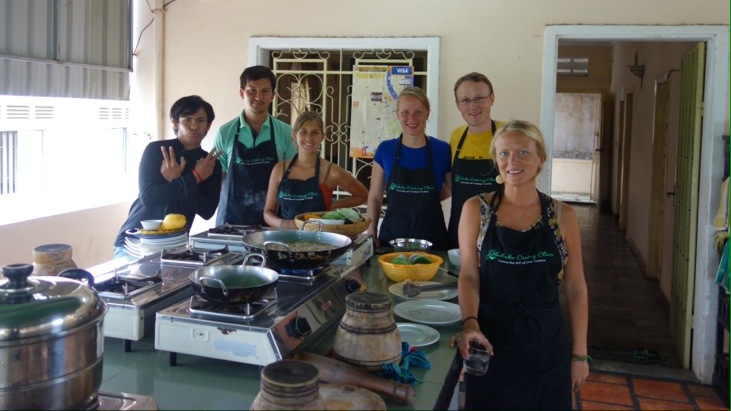
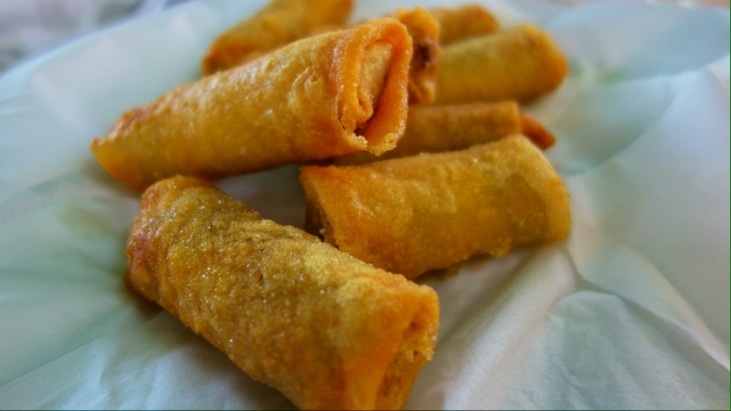


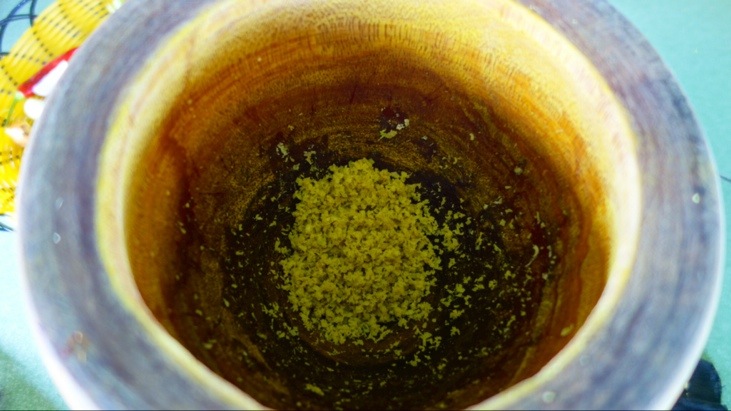
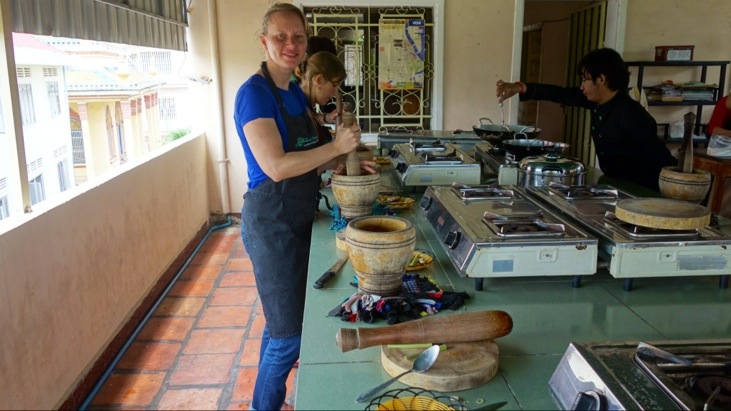
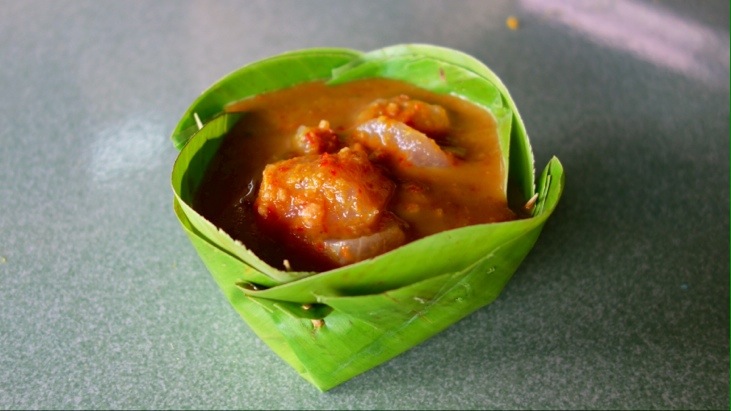
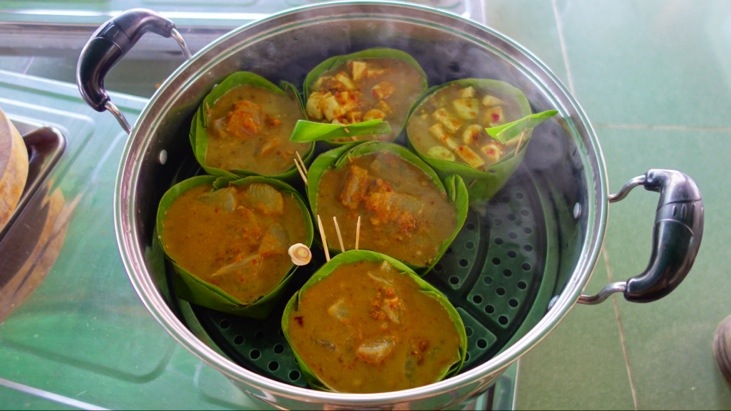

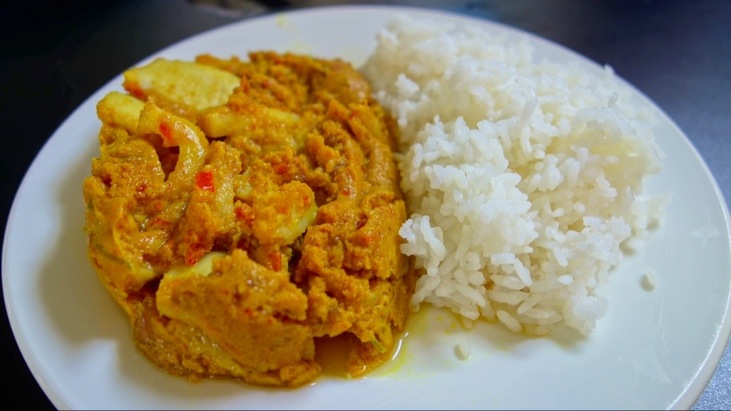
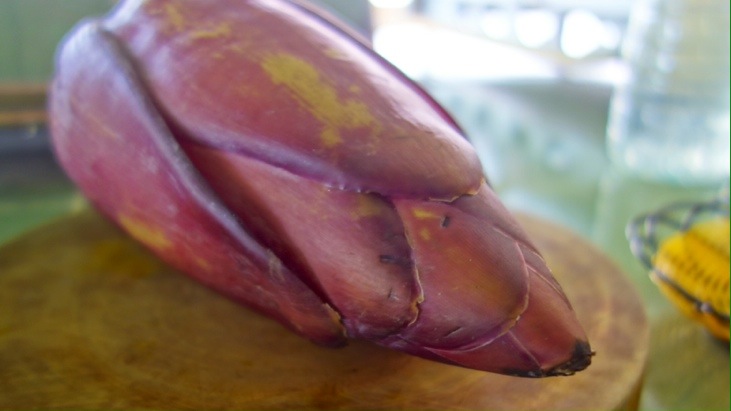
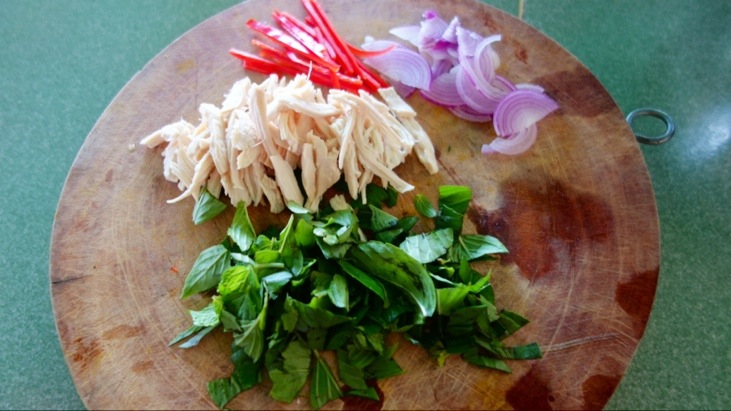
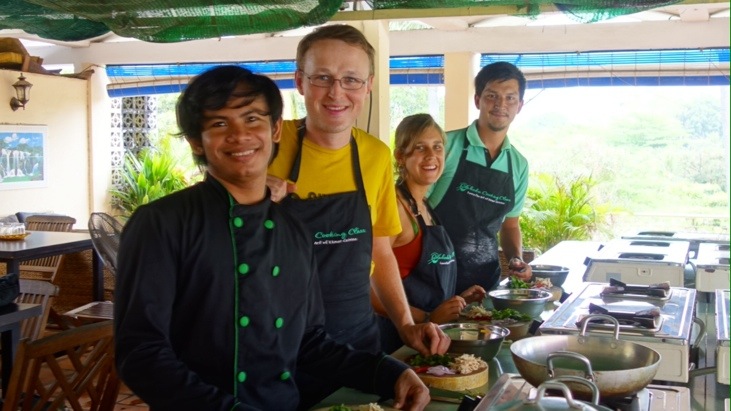
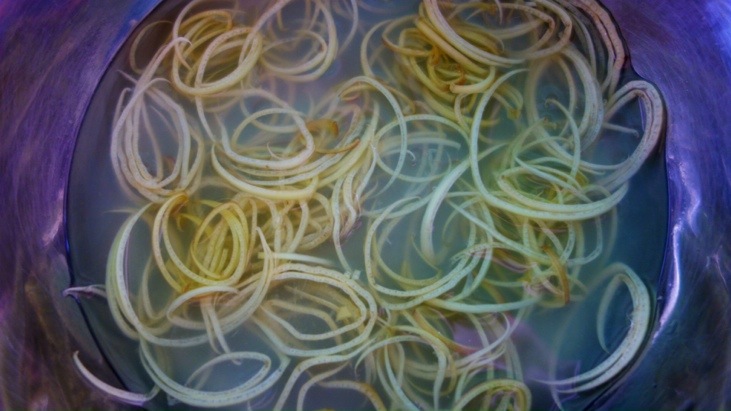
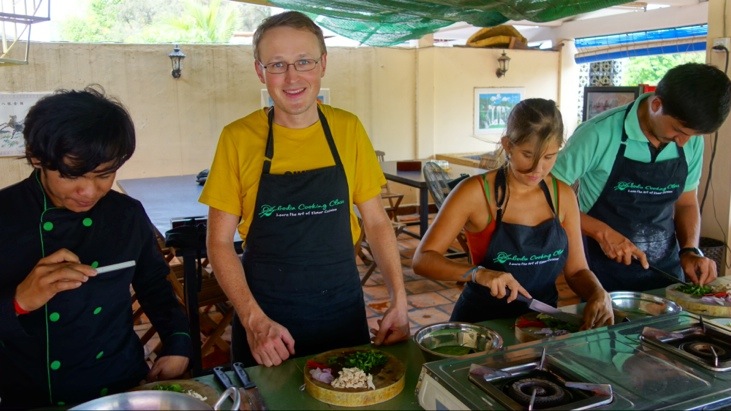
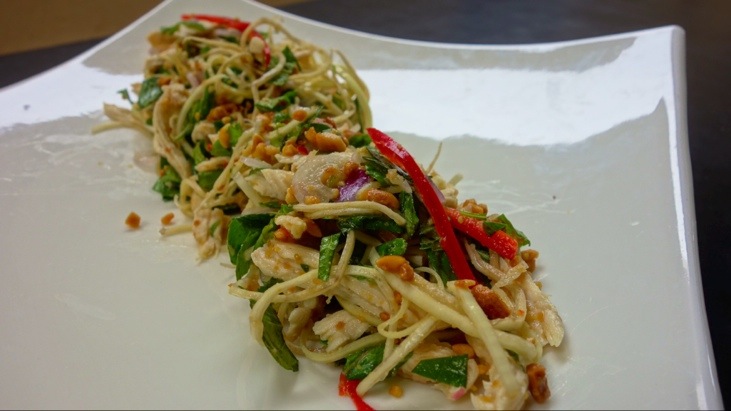
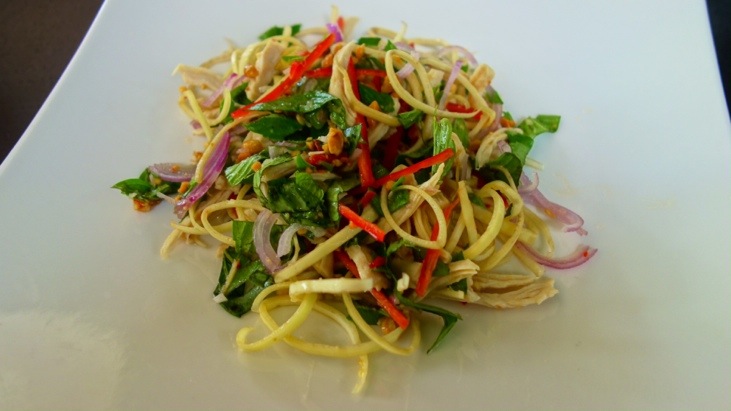
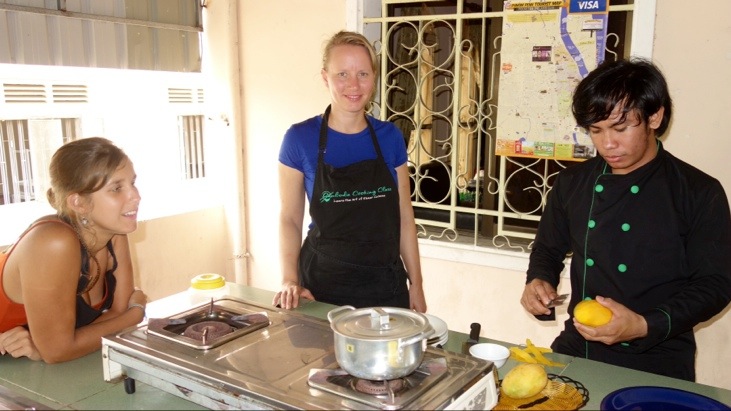
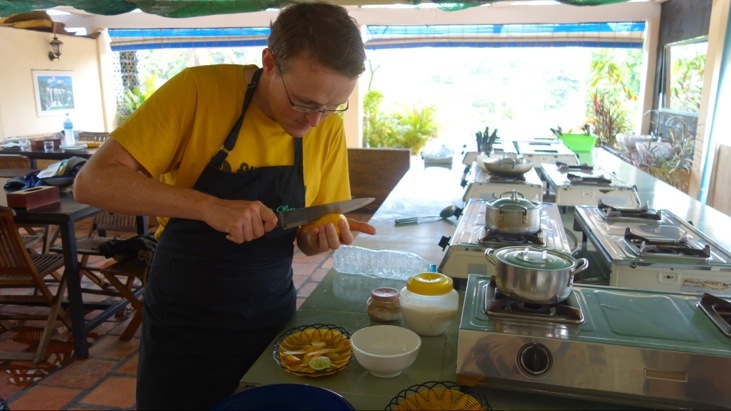
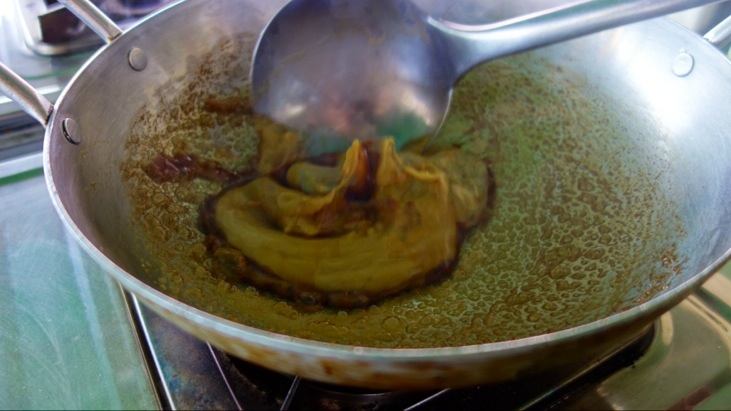
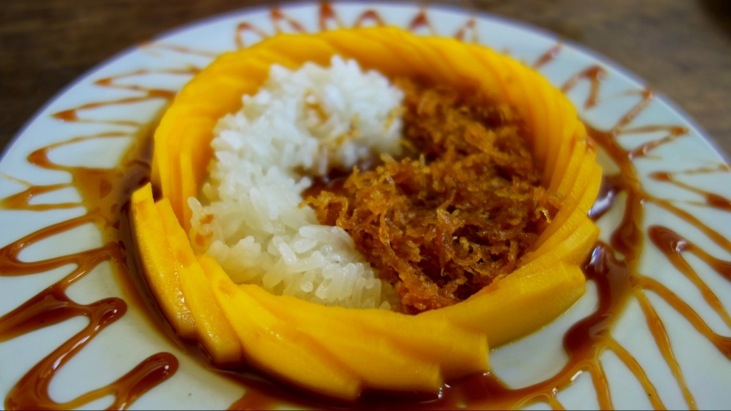
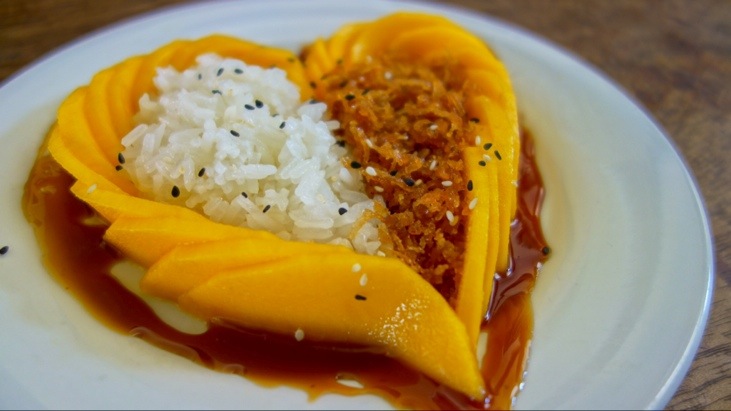
Leave a Reply
You must be logged in to post a comment.